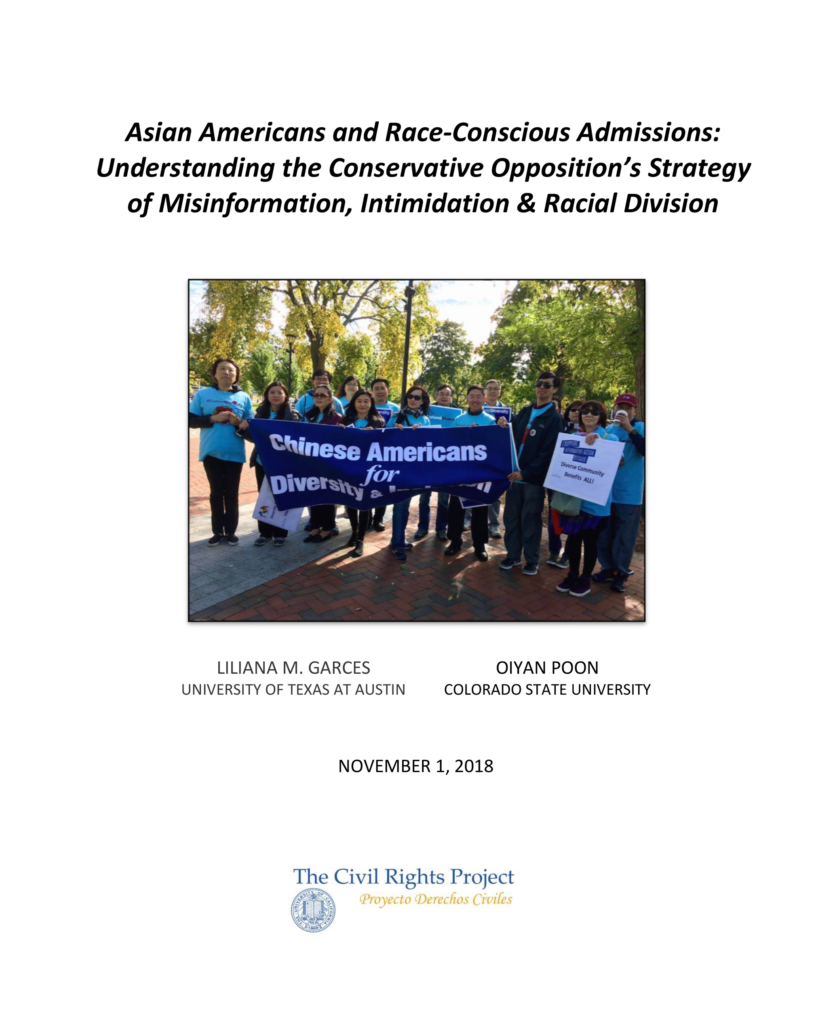This report examines the current wave of attacks against race-conscious policies in postsecondary admissions (or affirmative action as the policy is more commonly termed).
- Two new lawsuits making their way through the lower federal courts (Students for Fair Admissions Inc. v. Harvard University et al., and Students for Fair Admissions Inc. v. University of North Carolina et al.), were both initiated by long-time opponent of affirmative action, Edward Blum, and the organization he created, Students for Fair Admissions.
- Actions by the Trump Administration that seek to discourage the use of constitutionally permissible race-conscious policies in postsecondary admissions and to intimidate colleges and universities that remain committed to using them with the possibility of DOJ investigations, with decisions to (1) redirect the Department of Justice’s (DOJ) resources to investigate claims of discrimination at institutions that employ race-conscious admissions policies, (2) reopen the investigation of a complaint filed by a Chinese American student against Harvard, and (3) roll-back federal guidance on race-conscious admissions issued during the Obama administration.
This report focuses specifically on the roles that Asian Americans have come to play, both unwillingly and willingly, in these opposition efforts, and presents new research on Asian Americans’ support for affirmative action.
- Continuing a prior line of attack that began in the 1980s, white affirmative action opponents are strategically using the argument of discrimination against Asian Americans to condemn the policy, seeking to split interracial coalitions that support the policy, and use Asian Americans as a racial cover for their anti-affirmative action efforts.
- This time they are capitalizing on a unique and recent rise of Chinese American immigrant opposition to affirmative action. Several factors help explain this sudden and vocal increase in Chinese American opposition, including exam-focused cultures and systems of selective college admissions in China, changes to U.S. immigration policies, limited social interactions for these recent Chinese immigrants with other people of color (including other Asian Americans), and misinformation on affirmative action circulated via social media (WeChat).
Despite efforts by white affirmative action opponents to assert their agenda as one advocating for Asian American rights, and media accounts characterizing the Chinese Americans involved in opposition efforts as representative of Asian Americans in general, best evidence shows that the majority of Asian Americans across ethnicities support affirmative action.
- New research on Asian Americans’ stances on affirmative action illustrate important commonalities in the support for race-conscious policies in admissions
- A few other examples include: in CA, home to the largest Asian American population in the U.S., 61% of Asian American voters rejected Proposition 209; in MI, 75% of Asian American voters rejected Proposition 2; 62% of Asian American undergraduate students enrolled at four-year colleges and universities across the U.S. disagree with efforts to abolish the policy; and multilingual opinion polls conducted nationwide since 2012 show an overwhelming majority (68%) of Asian Americans support race- conscious admissions.
Recommendations include:
- More comprehensive reporting by the media on Asian American stances towards affirmative action would address misperceptions and attempts to create racial division on this topic.
- Targeted outreach to develop a stronger connection between research findings and public discourse around the benefits of race-conscious admissions for Asian American students and the community at large.
This research, along with 4 others, was presented at the briefing, Are Current Policy Changes Closing the Door to College for Students of Color?
In compliance with the UC Open Access Policy, this report has been made available on eScholarship:


